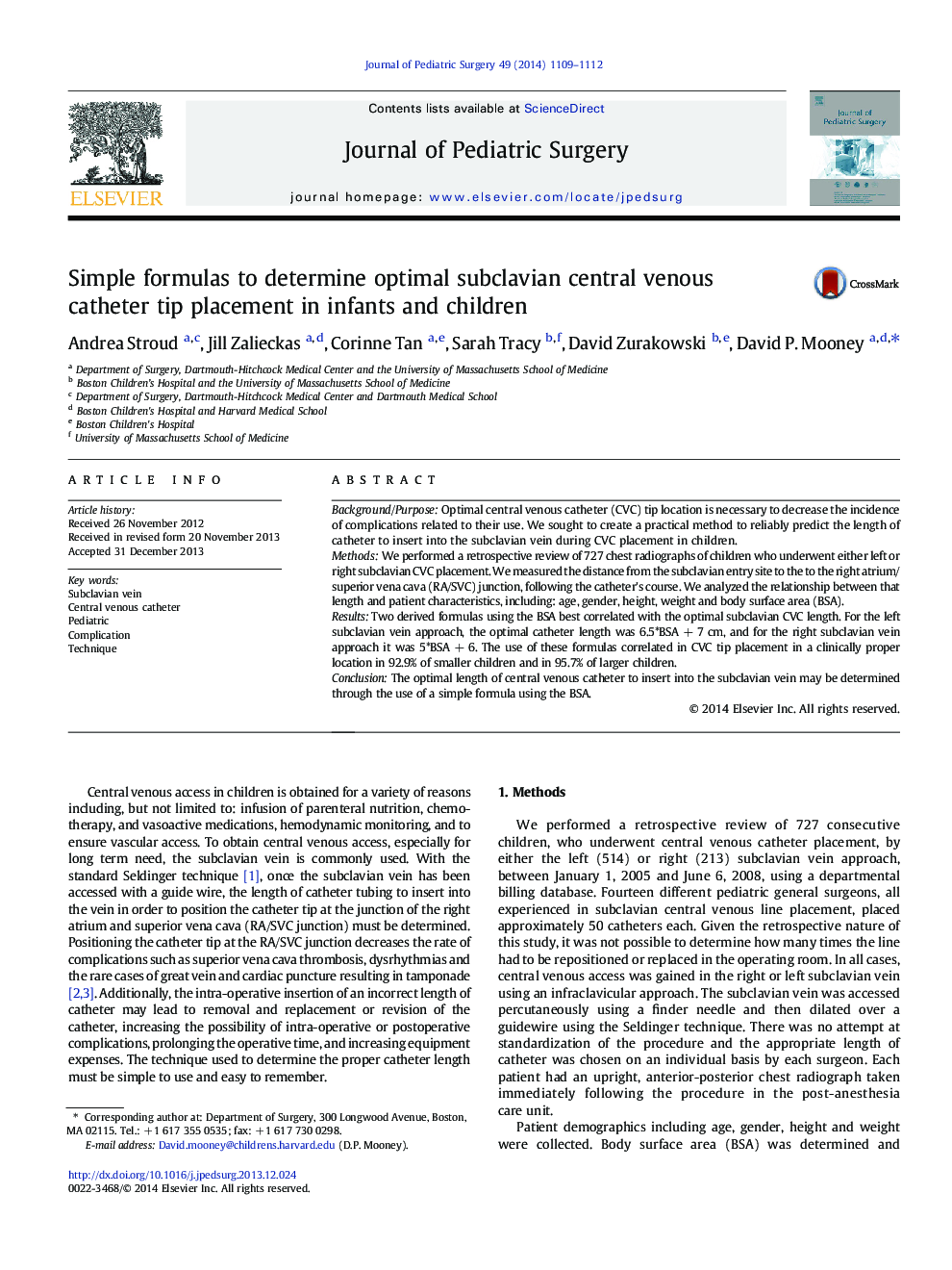| Article ID | Journal | Published Year | Pages | File Type |
|---|---|---|---|---|
| 6216810 | Journal of Pediatric Surgery | 2014 | 4 Pages |
Background/PurposeOptimal central venous catheter (CVC) tip location is necessary to decrease the incidence of complications related to their use. We sought to create a practical method to reliably predict the length of catheter to insert into the subclavian vein during CVC placement in children.MethodsWe performed a retrospective review of 727 chest radiographs of children who underwent either left or right subclavian CVC placement. We measured the distance from the subclavian entry site to the to the right atrium/superior vena cava (RA/SVC) junction, following the catheter's course. We analyzed the relationship between that length and patient characteristics, including: age, gender, height, weight and body surface area (BSA).ResultsTwo derived formulas using the BSA best correlated with the optimal subclavian CVC length. For the left subclavian vein approach, the optimal catheter length was 6.5*BSAÂ +Â 7Â cm, and for the right subclavian vein approach it was 5*BSAÂ +Â 6. The use of these formulas correlated in CVC tip placement in a clinically proper location in 92.9% of smaller children and in 95.7% of larger children.ConclusionThe optimal length of central venous catheter to insert into the subclavian vein may be determined through the use of a simple formula using the BSA.
